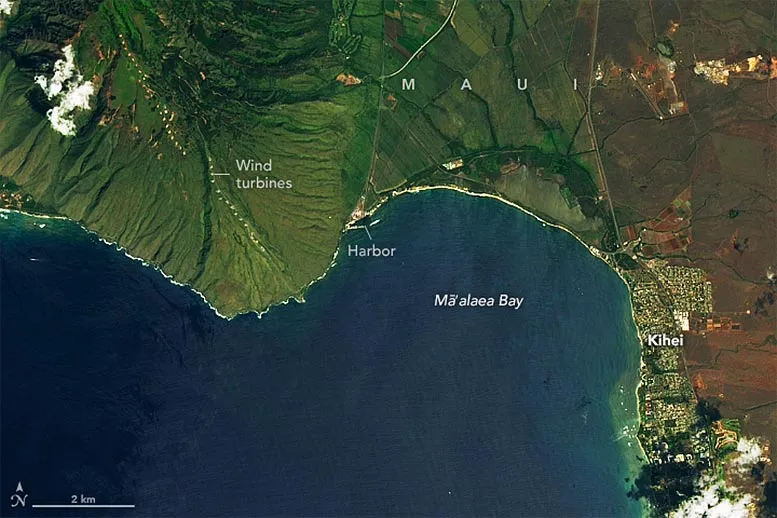"Freight train" and "great white shark" may sound like summer blockbusters, but these two names belong to the two most representative waves on Maui, Hawaii There is a reason why they are respected by surfers. "Freight train" is known as one of the fastest surfing spots in the world, while "great white shark" is famous for surfing in big waves.

The surf train across the Gulf of ayurya is called the "south point of ayurya". However, surfers say there are relatively few substantive, surfable breakpoints here. The conditions need to be just right: specifically, big waves must approach the Bay from the perfect South or Southeast.
Swells usually occur in winter in the southern hemisphere, when major storms are brewing in the South Pacific. These waves can travel thousands of miles across the equator to the southern shore of Maui, where it is summer. But waves may lose energy on the way because they encounter many island chains in the South Pacific.
The foam generated by these surf waves is shown as white stripes near the coast in satellite images. In the above picture, it was acquired with the operational land imager (OLI) on Landsat 8 on October 3, 2018. A small amount of foam can be seen near the port. The late season waves may have been affected by Hurricane walaka, a category IV storm centered about 1200 kilometers west of Maui.
The intensity of the near sea breeze is also important. The gentle offshore wind supports the wave front and helps create the smooth, steep surface that surfers seek. However, if the offshore wind is too strong, the waves will not be able to break at all. On Maui, which lies on the leeward side of the island, strong trade winds from the north are accelerated between the peaks of Mauna kahalawai (West) and Haleakala (East).

When the waves in maoaleya Bay break, they will rush over at an amazing speed like a "freight train". Surfers challenged the "water wall" and twitched their surfboards to keep up with the accelerating waves. According to Justin Stopa, a scientist at the University of Hawaii at Manoa, this speed has a lot to do with the dramatic shift of the seabed from deep water to shallow water. The strong current in the Bay may be strengthened by the port and will also make the waves break faster.
When the waves roll over Maui Bay, the situation on the north coast of the island is usually calm - that is, until winter, storms in the North Pacific are brewing. The waves generated by the winter weather system in the basin push towards the North Bank of Maui. Without the obstruction of other island chains, they retained more energy in a shorter journey, producing the island's famous winter waves.
"These are some of the largest waves on earth to ride and touch," said Stopa, who studies wind, waves and climate However, he is not sure about the reputation of "freight train" as the "fastest" wave. "I think this is based on the surfer's surfing experience, not an objective method based on observation."